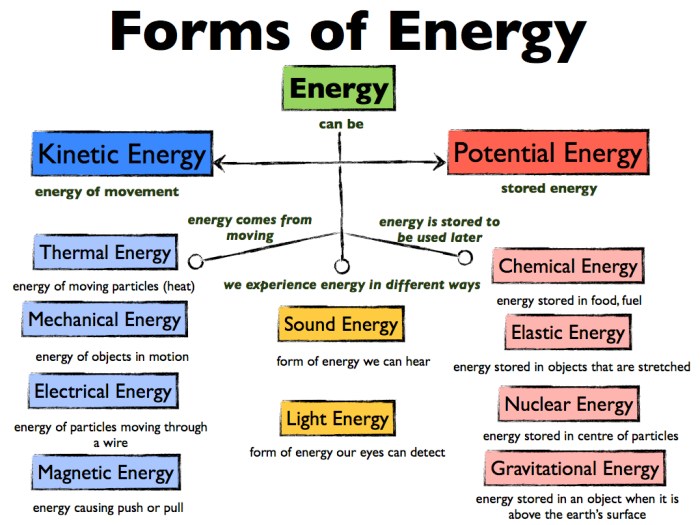Section 15.1 energy and its forms – In this captivating exploration of section 15.1, we embark on a journey to unravel the intricate world of energy and its multifaceted forms. From the kinetic energy of motion to the potential energy stored within, we delve into the very essence of energy, uncovering its diverse manifestations and the remarkable ways in which it can be transformed.
Throughout this discourse, we will traverse the vast landscape of energy sources, examining both renewable and non-renewable resources. We will scrutinize the advantages and drawbacks of each source, unraveling the complexities of energy conservation and efficiency measures, and charting the intricate pathways of energy distribution and transmission.
1. Energy and Its Forms

Energy is the ability to do work. It exists in various forms, each with unique characteristics. The most common forms of energy include:
- Kinetic energy:The energy of motion (e.g., a moving car)
- Potential energy:The energy stored due to position or configuration (e.g., a stretched spring)
- Thermal energy:The energy of heat (e.g., a hot stove)
- Electrical energy:The energy of moving electric charges (e.g., a battery)
- Chemical energy:The energy stored in chemical bonds (e.g., gasoline)
Energy can be converted from one form to another through various processes, such as:
- Mechanical work:Converting kinetic or potential energy into work (e.g., a falling object turning a generator)
- Heat transfer:Converting thermal energy into other forms (e.g., a stove heating a room)
- Electrical circuits:Converting electrical energy into other forms (e.g., a battery powering a light bulb)
- Chemical reactions:Converting chemical energy into other forms (e.g., burning fuel to release heat)
Helpful Answers: Section 15.1 Energy And Its Forms
What is the difference between kinetic and potential energy?
Kinetic energy is the energy of motion, while potential energy is the energy stored within an object due to its position or condition.
How can energy be converted from one form to another?
Energy can be converted from one form to another through various processes, such as mechanical work, heat transfer, and chemical reactions.
What are the advantages of renewable energy sources?
Renewable energy sources, such as solar and wind power, are environmentally friendly, sustainable, and can reduce our dependence on fossil fuels.


